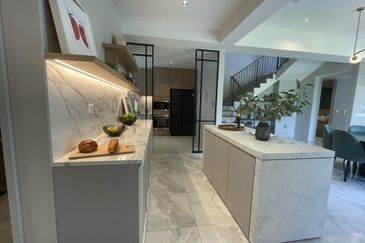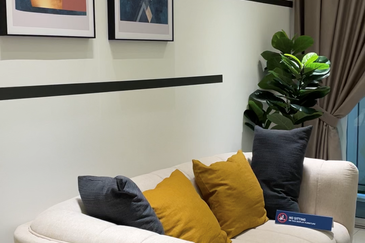
Ching Chiat Kwong, a former policeman-turned-serial entrepreneur and property developer, is used to taking risks. His most audacious bet by far is a 40-acre (16 hectares) regeneration scheme in the Royal Docks in east London that he purchased for £200 million in November 2013.
Developer Oxley’s acquisition of the site stands out as the biggest by a Singapore developer so far, according to Nicholas Holt, head of research for Asia-Pacific at Knight Frank.
“There was really nothing there at the time,” recounts Ching, Oxley’s executive chairman and CEO (chief executive officer). Yet, he was confident that he could transform it into a new and desirable township for 10,000 residents. And he had set a target for the entire scheme to be completed within five years instead of the 10 to 15 years that most UK developers typically take to develop a township or regeneration scheme of this scale.
Many analysts speculated at the time that Ching had overextended himself. But he could still have the last laugh. Since acquiring the site, Oxley has been cranking up sales and racing to complete the construction of the project. “Over the past year, we have sold 30 to 40 units each month,” says Ching. “Based on that, we will be able to sell all the units by year-end.”
![Ching: Over the past year, we sold 30 to 40 units each month. Based on that estimate, we will be able to sell all the units [at Royal Wharf] by year-end. (Photos by The Edge Singapore) Oxley](https://dbv47yu57n5vf.cloudfront.net/s3fs-public/editorial/my/2016/March/16/Ching%20resized_0.jpg) ‘London’s fastest-selling project’
‘London’s fastest-selling project’
Royal Wharf, Oxley’s township project in London, will have 3,400 apartments and townhouses, a school, parks and community spaces as well as more than 150,000 sq m of Grade-A office space and over 50,000 sq m of F&B and retail space. A Sainsbury’s supermarket, Starbucks and other cafés as well as restaurants are expected to open there. When Oxley purchased the site from UK developer Ballymore, it also roped in the latter to be its partner in the regeneration scheme.
So far, Phase 1 of Royal Wharf, which comprises 811 units, is almost fully sold, with fewer than 10 units still available. Phase 2, which has 1,589 units, is also substantially sold, with about 150 units left. Phase 3 will consist of 950 units, says Eric Low, deputy CEO of Oxley.
The first residential block at Royal Wharf is scheduled to be completed in June, and Oxley intends to complete and hand over one block every 1½ months. As there are 30 buildings in the entire scheme, Low reckons the developer can complete and hand over all the units by end-2018. This will make Royal Wharf the fastest-selling project in London, he says.
Towards end-February, Oxley rolled out Mariner’s Quarter, the third phase of Royal Wharf. As part of its global launch in four major cities, Mariner’s Quarter made its debut in London on Feb 25 and Hong Kong on the weekend of Feb 27 and 28. The project was showcased in Singapore on the weekend of March 12 and 13 and will be showcased in the Middle East in April.
Even before the official launch in Singapore over the weekend, 16 units at Mariner’s Quarter had been pre-sold, says Eugene Lim, Oxley’s director of marketing and sales. Another 20 units were snapped up in Hong Kong, while London saw more than 30 units sold.
Like most developers, Ching had been concerned about the additional 3% stamp duty that the UK government imposed on second-home buyers effective from April. “Even with the additional stamp duty, the response in Hong Kong was good,” he says. “It is clear that London is still a melting pot, and prospects are good, as there is a shortage in the housing market.”
The 207 units at Mariner’s Quarter that have been launched are located in two buildings — James Cook and Marco Polo. The two buildings were designed by acclaimed Singapore-based architectural firm DP Architects, which was selected by a panel in an international design competition. The one- to three-bedroom apartments offer a view of the River Thames and are sold on a 999-year lease. Prices are said to start from £395,000 (RM2.33 million) for a one-bedder, or an average of £800 psf. “We are putting our best units forward in this phase,” says Low.
The perception that there could be a high percentage of buyers failing to complete their purchases or flipping their properties is incorrect, says Lim. UK residents make up 60% to 70% of the buyers of Royal Wharf, and the majority are owner-occupiers. “Chances are high that they will complete their purchases and move into their new homes,” he adds. “For them, the most important thing is affordability.”
The rate of price increase at each phase of Royal Wharf has also been more gradual compared with some of the other regeneration schemes that have been launched. The first phase was released at an average price of £550 psf; the second at an average of £650 psf; and the third at £800 psf. “Those who purchased their units in the earlier phases are bound to make money in the secondary market,” notes Lim.
Within the project, about 20% of the residential units have been allocated for affordable housing. Most of these blocks have been purchased by funds, says Ching. For instance, last July, Oxley signed a forward contract for the sale of 195 units to one of the UK’s largest housing associations, London & Quadrant, for £75.14 million. L&Q is one of London’s largest landlords, with a portfolio of more than 70,000 homes that it has either developed or is currently managing. Oxley had also sold the rights to ground rents for the units in Phases 1 and 2 of Royal Wharf to Adriatic Land East Ltd for £34.5 million last July.
On the lookout
For Oxley, the completion of Royal Wharf will also mean that the developer can start recognising more than S$1 billion in revenue progressively from June, says Low. This is because in the UK, buyers need to pay a down payment of only 10% at the point of purchase, another 10% a year later and the remainder upon completion of the project.
With the sales proceeds from Royal Wharf rolling in, Oxley’s gearing ratio should be reduced further in FY2017. The ratio has already been pared down to three times as at end-2QFY2016 from 4.92 times at end-4QFY2015 (the company has a June year-end). Thus, Oxley is searching for more opportunities in the London market. “We prefer such regeneration schemes and township developments, which are less speculative, to provide income stability and enhance Oxley’s profile as an international property player,” says Low.
Last July, Oxley purchased a 22,830 sq m site on a 999-year lease at Deanston Wharf in Canning Town for £35 million. The site is said to be located near Royal Wharf, and will be used to build residential units comprising private and affordable housing.
Oxley also paid £50 million last July for a 20% stake in Galliard Group, a UK developer and builder. Oxley can increase its presence in the UK through its investment in Galliard, as the latter has quite a significant landbank in East London that could be developed over time, adds Low.
Beyond London, Oxley has ventured into Dublin, Ireland. In December 2014, the developer was selected as the preferred bidder in a tender for a 2.35ha site at 72-80 North Wall Quay, next to the proposed headquarters of the Central Bank of Ireland. Oxley acquired the site on a 300-year lease as well as the right to develop and manage the Grade-A office building in the future. It has secured the National Treasury Management Agency as an anchor tenant, and is in negotiations with several other financial institutions to take up space there.
Meanwhile, the National Asset Management Agency is retaining the freehold interest in the site and will be given 20% of the office building, which will have more than 60,000 sq m when completed. Oxley and Ballymore will also develop 300 apartments on the site, which is located within Dublin’s Docklands Strategic Development Zone regeneration area.
 Singapore ventures
Singapore ventures
It looks like Oxley is not going to slow down its pace. Over the last two years, the developer has expanded to Kuala Lumpur, Phnom Penh, Yangon and Batam, Indonesia.
In Singapore, Oxley initially developed shoebox apartments in boutique freehold projects that were exceedingly popular with small-scale investors in the wake of the global financial crisis in 2009. The developer is also behind the smallest units in Singapore — 24 sq m, or 258 sq ft, at its 72-unit Suites @ Guillemard project in the east. The project was sold out within five hours of its launch.
Other boutique developments by Oxley include the 84-unit Devonshire Residences, the 41-unit Loft @ Stevens and the 40-unit Loft @ Holland. All the units at Loft @ Holland were snapped up within an hour of its preview in late January 2011, despite the government’s introduction of a fifth round of property cooling measures earlier that month, when the seller’s stamp duty was increased to 16%, 12%, 8% and 4% for residential units sold within the first to fourth years of purchase.
Oxley has also developed seven mixed-use projects in Singapore, of which three will be completed this year. They are KAP and KAP Residences at King Albert Park; Midtown and Midtown Residences in Upper Serangoon; and NEWest in West Coast. KAP and Midtown are joint-venture projects and 99% sold, while NEWest, which was developed as part of a consortium, was 94% sold as at end-December.
The shift to mixed-use developments is part of Oxley’s strategy to provide a balance in its portfolio between development sales and investment properties with recurring income. In Singapore, its biggest investment so far is the acquisition of the land formerly occupied by The Pines Country Club on Stevens Road for S$318 million. When the project is completed in 2H2017, it will have two hotel blocks of 782 rooms managed under AccorHotels’ Novotel and Ibis brands. There is also commercial space on the site that has been approved for F&B use. This will allow the developer to create dining clusters similar to those at Dempsey Hill, says Low. The completion of the development will boost Oxley’s portfolio of assets with a recurring income, he adds.
The developer will launch T Space in Tampines later this month. It is a 30-year leasehold industrial project with 110 units on mezzanine levels and 139 factory units. The development is a joint venture between Oxley and Lian Beng.
Other projects in Singapore that Oxley will relaunch this year are The Rise @ Oxley, where 51 of 120 residential units have been sold in the first phase. The freehold District 9 project will be relaunched at prices from S$2,110 psf. Meanwhile, Flora V (Floraville, Floraview and Floravista), a mixed-use development with residential and commercial units located in Yio Chu Kang, will be relaunched later this year. The freehold project is 44% sold. With units priced at S$1,250 to S$1,350 psf, it is considered affordable compared with recent launches of suburban projects, says Lim.
 Growing footprint
Growing footprint
Oxley is willing to exit its investment properties if the price is right. In Japan, for instance, the company had acquired China Port Square, a mixed-use development with a freehold 28-storey office building, an eight-storey commercial retail building and the 270-room Candeo Hotel, for ¥3.55 billion in November 2014. Last December, Oxley announced that it had accepted an unsolicited offer for China Port Square for US$60 million from Greenland Hong Kong Investment Group and Japanese duty-free store chain operator LAOX Co Ltd. The sale was completed on Feb 22.
The developer has a pipeline of overseas projects for launch later this year. Its development in Batam is a joint venture with PT Kurya Indo Batam. The project will be an upscale, mixed-use development on a 20,000 sq m site comprising a hotel and residences. The 375-room hotel located at the junction of Jalan Laksamana Bintan and Jalan Gajah Mada is scheduled to open in 2021. An agreement to manage the hotel was signed with Wyndham Hotel Group last November. The luxury residences are scheduled to be launched in the coming months, says Low.
Another project that will be launched in the middle of this year is Oxley’s mixed-use development in the Kuala Lumpur city centre. It acquired a 12,575 sq m freehold site for RM446 million for the construction of three towers. Oxley has signed up Jumeirah Group to operate a 190-room hotel and 265 branded residences in the 49-storey tower. Another 207 hotel rooms will be operating under the So Sofitel brand by AccorHotels, with 600 branded residences in a 79-storey tower. The third tower, of 28 storeys, will contain Grade-A office space.
Low reckons it is a good time to launch the project in Kuala Lumpur, as most developers are holding back their launches, given the current sentiment.
In Cambodia, Oxley has acquired four development sites in joint ventures with local partners. Its first project, The Bridge, is a 45-storey building with 762 residential units and 963 Soho units. About 96% of the residential units and 74% of the Soho units were sold as at end-December.
The second project in Cambodia, The Peak, is a mixed-use development with residential units in two towers, an office block, a mall and a hotel managed by Shangri-La International Hotel Management. A soft launch of The Peak was held at end-2015 and about half of the 500 residential units were snapped up. The Peak will be launched next month, following the opening of a sales gallery in Phnom Penh, says Low. Oxley’s third project there is scheduled to be launched in Singapore in 2H2016.
Oxley will continue to explore opportunities in new emerging and developed markets regardless of the prevailing market sentiment. “We are optimists,” says Low. — The Edge Singapore
TOP PICKS BY EDGEPROP

LSH33 ( Laman Seri Harmoni )
Sentul, Kuala Lumpur

M Adora @ Wangsa Melawati
Wangsa Maju, Kuala Lumpur

M Adora @ Wangsa Melawati
Wangsa Maju, Kuala Lumpur
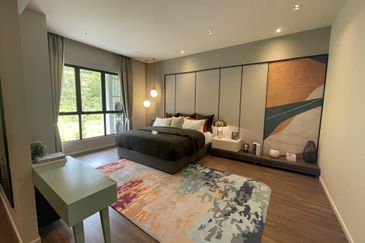
Sunway Rydgeway Puncak Melawati
Taman Melawati, Selangor
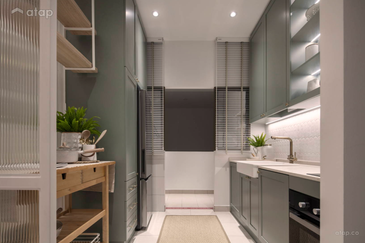
Kenwingston Platz Residence
Setapak, Kuala Lumpur

Henna Residence @ The Quartz
Wangsa Maju, Kuala Lumpur

M Adora @ Wangsa Melawati
Wangsa Maju, Kuala Lumpur

M Adora @ Wangsa Melawati
Wangsa Maju, Kuala Lumpur
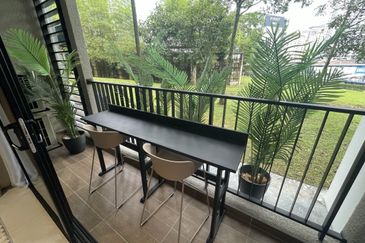
The Ridge @ KL East (Residensi Rabung KL Timur)
Setapak, Kuala Lumpur

Sunway Avila Residences
Wangsa Maju, Kuala Lumpur



